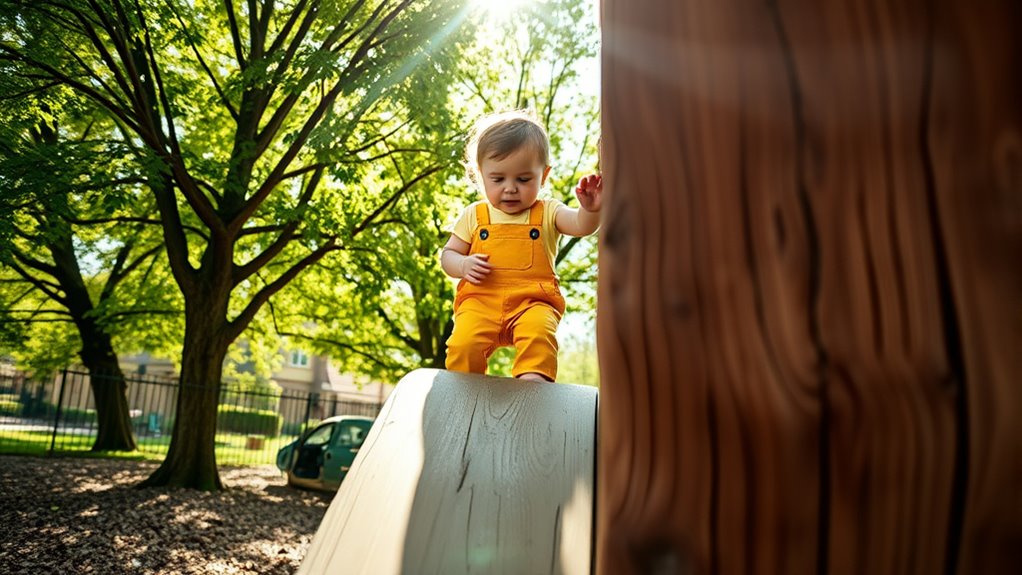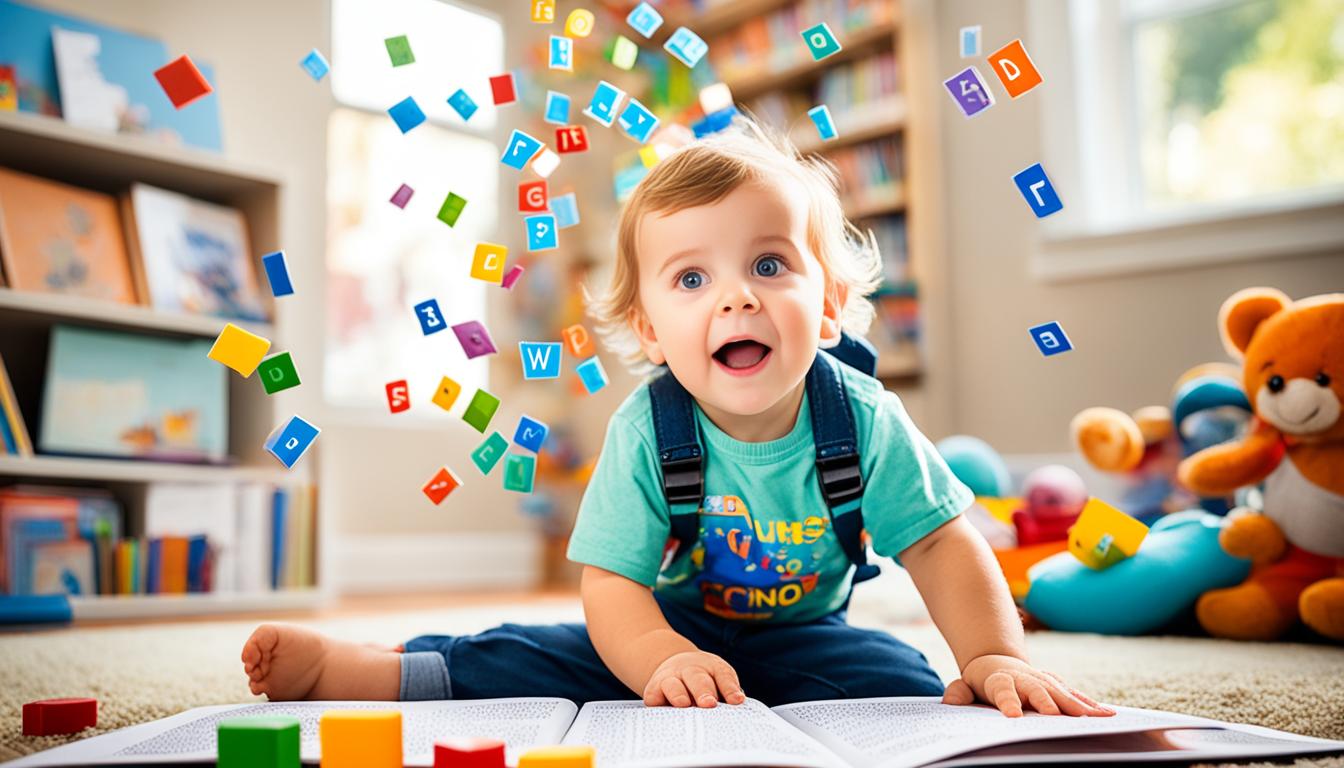Allowing your toddler to climb and explore risky play under your supervision helps them develop vital skills, like assessing hazards, building confidence, and making safe decisions. As a caregiver, you can encourage exploration by observing their actions, asking engaging questions, and pointing out potential dangers. These activities teach your child to weigh risks versus abilities, supporting healthy development. Keep exploring to discover more ways to foster safe, confidence-building play.
Key Takeaways
- Supervised play allows toddlers to explore climbing safely while developing risk assessment skills.
- Engaging children with questions and encouragement builds confidence and critical thinking during risky activities.
- Caregivers should point out potential hazards and guide children to make safer choices.
- Providing age-appropriate climbing opportunities helps children learn their limits and handle challenging terrains.
- Active supervision supports healthy risk-taking, fostering independence and safety awareness for future decisions.

Climbing and risky play are essential parts of childhood that foster independence and build confidence. As a caregiver or parent, you play a key role in guiding your toddler through these experiences, ensuring they explore safely while reaping the benefits of challenge and discovery. Supervised exploration allows your child to push their boundaries, but it’s equally important to stay attentive and aware of potential hazards. By actively observing their actions, you help them develop crucial risk assessment skills—learning to judge what’s safe and what’s too dangerous. This process teaches your little one to evaluate obstacles, judge their own abilities, and make smarter decisions in real time.
When you encourage supervised exploration, you’re not just watching from the sidelines; you’re engaging with your child, helping them understand their environment. For instance, when they’re climbing a low rock wall or a sturdy tree branch, you can ask questions like, “How does that feel?” or “What do you think might happen if you try this?” These conversations foster critical thinking and boost their confidence. Your presence reassures them that they’re supported, even as they take risks, which makes the experience less intimidating and more empowering.
Risk assessment is a skill that develops through practice, and you can actively facilitate this learning process. As your child attempts to climb higher or explore uneven terrain, you can point out potential dangers, such as loose branches or slippery surfaces, without discouraging their curiosity. Instead, you help them weigh the risks against their abilities: “That branch is a little wobbly, maybe you should find a sturdier one,” or “That slide looks fun, but let’s make sure the landing area is clear.” This way, your child learns to make safer choices while still feeling the thrill of adventure. Over time, they’ll become more adept at judging what’s safe, which is a fundamental life skill. Additionally, understanding how to handle raw foods safely can further support their learning about making healthy and safe choices in everyday life.
Conclusion
So, next time your toddler climbs a little higher or tries something new, remember—it’s all part of their growth. By allowing safe risks, you’re helping them build confidence and resilience. Would you rather shield them from every stumble or watch them learn to navigate life’s challenges? Trust in their ability, set boundaries, and watch your little one thrive as they explore their world with curiosity and courage. After all, isn’t that what childhood is all about?










